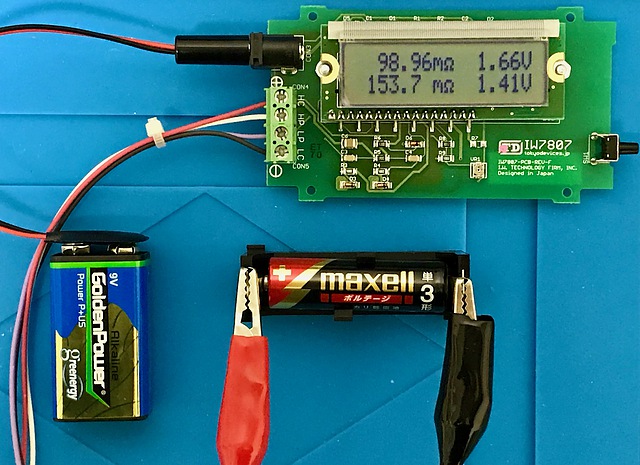Measurement of internal resistance of dry battery
Since IoT devices often operate on small batteries, it is important to know the characteristics of batteries. Batteries are modeled as a series connection of a voltage source and an internal resistor. I have measured this internal resistance.

If we measure the voltage without connecting a load to the battery, we can find the voltage value. If we connect a known load and measure the voltage, we can estimate the internal resistance from the voltage drop. However, the wires and the probes themselves have resistance, and the batteries are discharged by connecting the load.
The four-terminal method separates the voltage measurement probe that measures the battery voltage from the loading probe that applies the load, and measures the voltage and internal resistance simultaneously. If we use an alternating current as the loading probe against the voltage measurement probe , we can measure the voltage and internal resistance without charging or discharging the battery.
Here, I used the product of Tokyo Devices. We can see that the voltage and the internal resistance value differ depending on the battery.
Currently, I am considering how to use lithium battery equipment outdoors. I am experimenting with Texas Instruments’ lithium battery charging IC and Maxim’s state of charge estimation IC.